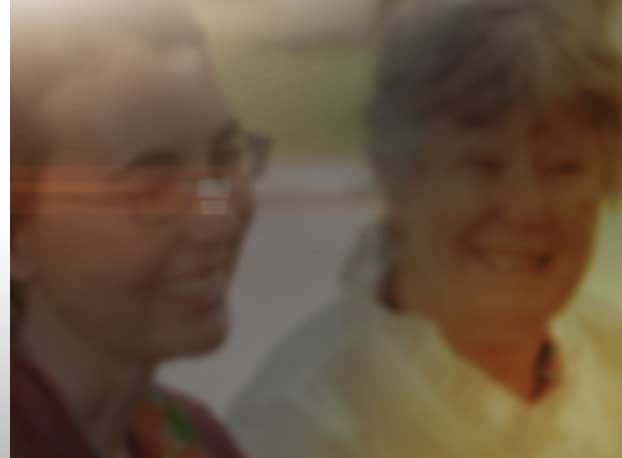-
 Gabrielle Giffords was a hiker
Gabrielle Giffords was a hiker
and bicyclist committed to healthy living, a fact Giffords doctors told reporters in the days after the shooting would be helpful in her recovery. Besides hiking when at home in Arizona, the congresswoman practiced yoga and in-line skating. An adamantly healthy eater, a Giffords' representative said she ate very little junk food and lots of fruit and vegetables. Doctors say that her healthy lifestyle could have
Doctors say that her healthy lifestyle could have
been a key factor in Giffords' recovery. "After severe injury or prolonged disability, patients lose muscle mass, strength and endurance. So when they're up and ready to be mobilized, the more they have left, the better. The more physically agile and fit someone was going into an injury is going to help them throughout the rehabilitation course," said Dr. Jaime Levine, medical director of brain injury rehabilitation at NYU Langone Medical Center. -
Click on dots below for more information.BRAIN INJURIESGabrielle Giffords, 40, was shot just above her left eye, and while the exact path of the bullet was unknown Giffords' doctors said the bullet never crossed from one hemisphere of the brain to the other. While the path did leave doctors optimistic, Giffords' medical team also made clear the gravity of the situation. "This wasn't a little grazing wound through the brain, this was a devastating wound that traveled the entire length of the brain on the left side," said Dr. Peter Rhee, Giffords' trauma surgeon. Brain injuries usually affect the opposite side of the body, but it is impossible to predict since every brain injury is unique.RIGHT BRAINThe right hemisphere is sustained, broad, open, vigilant, and alert. It is always on the look out for things different than our expectations. It understands implicit meaning, body language, metaphors, and context. It understands that nature is never fully graspable, never fully known, McGilchrist said.LEFT BRAINAccording to psychiatrist Iain McGilchrist, the left hemisphere gives narrow, sharply-focused attention to detail, and helps us grasp language and concrete ideas. The left brain yields clarity and focus, so when we know something is important and want to be precise about it, we use our left hemisphere.
-
Click on dots below for more information.BRAIN INJURIESWhen it comes to brain injuries there is always the possibility it could affect several of the sections of the brain controlling cognition, speech, movement and personality. Depending on which brain tissues were damaged, doctors say speech and movement can be severely impaired, potentially inhibiting the use of arms and legs, and the full use of a patient's face. Typically these injuries can create a host of cognitive and behavioral challenges, from impaired walking to issues with language, attention span and memory.FRONTAL LOBEThe frontal lobe is the part of the brain involved with executive function, like organizing, and higher cognitive functions like behavior and emotions. It also controls some motor function, and if injured it can cause muscle weakness, according to Dr. Levine.TEMPORAL LOBEThe temporal lobe controls memory, including visual and verbal memory. Names, places and faces are stored here.PARIETAL LOBEThe parietal lobe on the left side can be associated with spoken and written language, and on the right side with spatial and visual understanding and sensation, according to Dr. Levine.OCCIPITAL LOBEThe occipital lobe is where we process visual input, according to Levine. It helps us recognize shapes, colors, and other visual anomalies.
-
Click on dots below for more information.BROCA'S & WERNICKE'SIn these type of injuries doctors pay close attention to how the injury affects the Broca's area and Wernicke's area of the brain—the two parts that control speech and language. Centers of speech and movement are only "a few centimeters apart," and so a patient could have just an isolated speech injury and be spared disabilities in movement, said Dr. Anand Germanwala, director of skull-based neurosurgery at the University of North Carolina Medical School. Speech is very complicated, according to Germanwala; it requires not only the ability to communicate verbally, but to comprehend and to know when to move the lips.BROCA'S AREABroca's area is a part of the brain that controls one aspect of language, and is associated with deficits in fluency of speech, said Dr. Levine. So patients with Broca's aphasia—or language impairment- comprehend language they hear, but their words can come out wrong. Patients mean to say one thing, but another comes out. Broca's aphasia can be particularly frustrating for patients, Levine noted.WERNICKE'S AREAWernicke's area controls the meaning of language, so a person with Wernicke's aphasia sounds very fluent, can speak a mile a minute, and might have their nouns properly associated with their verbs, but makes little sense when they speak, Levine said. Patients also have trouble understanding what they're hearing when other people speak to them. Levine said both Broca's and Wernicke's aphasia repond very well to speech therapy, and patients can continue improving for years.
-
Click on dots below for more information.CRANIOPLASTYIn an emergency surgery after she was shot, a portion of Gabrielle Giffords' skull was removed to ease the stress and pressure on her brain due to swelling. It is a common procedure in these types of brain injuries and must be monitored because if left unchecked the swelling possibly can further damage sensitive brain tissue. In a follow-up procedure, a team led by Dr. Dong Kim inserted a plastic replacement, its shape generated by computer to match the shape of the lost bone.CRANIOPLASTYThe brain is encased in a rigid skull, so if there's any swelling or increase in fluid, there's no place for it to go because unlike a bruise on your skin the hard skull doesn't allow the brain room to swell properly. If left unchecked, this swelling could further damage sensitive brain tissue by pressing up against the hard skull. So surgeons can remove part of the skull temporarily, and later replace that piece of bone during crainioplasty. The replacement can be either the original bone or a prosthetic. While the piece of skull is removed, patients must wear helmets to protect the brain tissue and fluid from injury. Crainioplasties often lead to clinical improvements, including walking better, having better cognitive function, and recovering more quickly.
-
 Gabrielle Giffords' recovery was dramatic
Gabrielle Giffords' recovery was dramatic
in the days and weeks following the shooting, she began immediately responding to commands, and soon graduated to scrolling through her iPad and going outdoors. At The Institute for Rehabilitation and Research in Houston, Giffords met daily with a team of specialists, including speech, occupational and physical therapists, as well as a neuropsychologist who helped rehabilitate her cognitive functioning. Within two months, Giffords was mouthing the words to "Twinkle Twinkle Little Star" and "Happy Birthday" and talking on the telephone. She also walked up and down halls using a shopping cart and did squats. In early June, over five months after the shooting the first photos of Giffords' were released. Taken May 17, the photos show Giffords with her mother and feature that same mega watt smile she had before the shooting. -
Just seven months
after the shooting, Gabrielle Giffords made a triumphant return to the House of Representatives to cast a vote on the debt-ceiling deal in Congress. Giffords, who voted "yes" to the deal, was greeted with a standing ovation. "I had to be here for this vote," Giffords said in a statement. "I could not take the chance that my absence could crash our economy." Giffords later Tweeted about the vote: "The Capitol looks beautiful, and I am honored to be at work tonight." -
 In October, Gabrielle Giffords attended
In October, Gabrielle Giffords attended
a ceremony celebrating husband Mark Kelly's retirement after 25 years of service to the U.S. Navy and NASA. Giffords smiled, blew kisses, and waved to friends at the ceremony, before standing to attach the Distinguished Flying Cross medal to Kelly's uniform. Giffords sat with Kelly's mother and Vice President Biden, who said, "You look good Gabby. I look forward to welcoming you back, kiddo. You've been an inspiration to thousands of people."